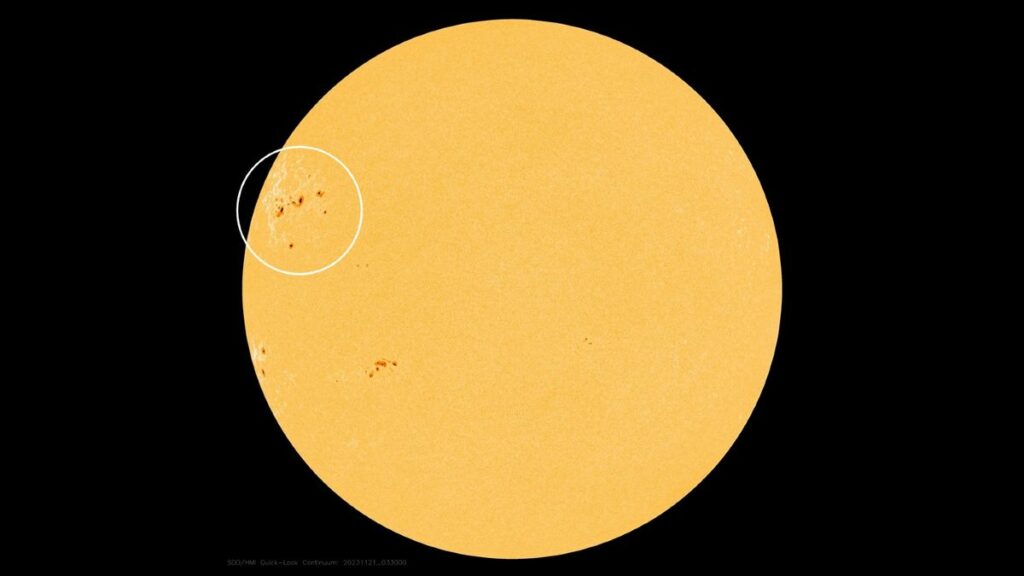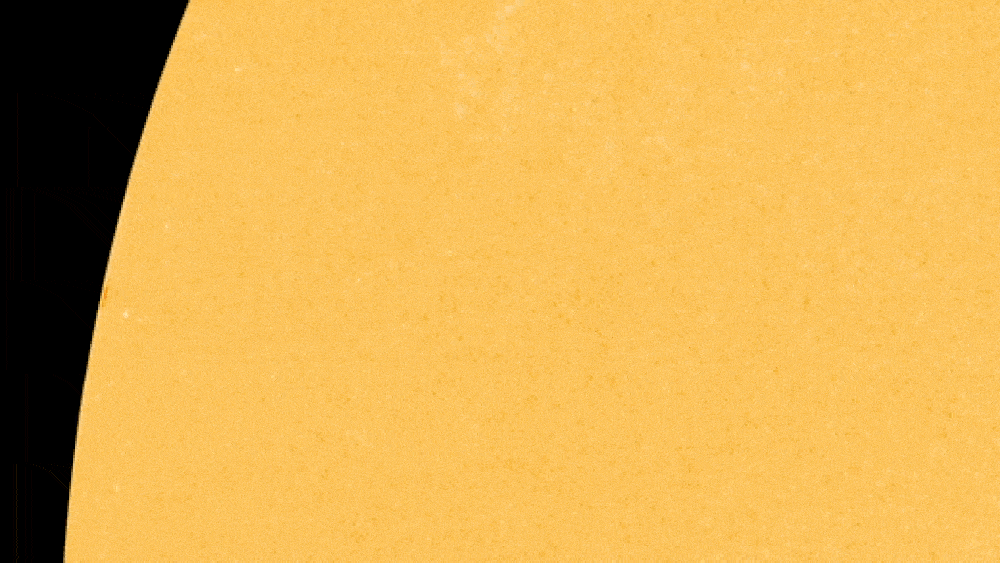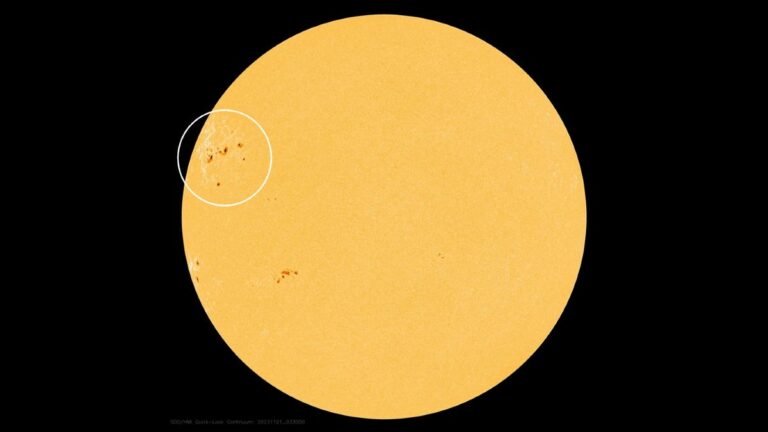Gigantic ‘Sunspot Archipelago,’ 15 Times Wider Than Earth, Poses Impending Threat of Solar Flares
A sprawling sunspot region, comprising a minimum of six distinct sunspot groups, has surfaced on the sun’s visible side. This “archipelago” of shadowy patches is ejecting solar storms at a concerning frequency, putting Earth on course to be directly affected.

A colossal and densely populated sunspot region, among the largest witnessed in over a decade, has materialized on the sun’s side facing Earth. This expansive cluster has initiated a series of impactful solar storms, inducing significant disturbances on the surface of our home star. Earth is poised for an intriguing period ahead as it soon finds itself in the trajectory of these eruptive dark patches.
The initial sunspot group, designated AR3490, made its appearance on the sun’s nearside on November 18, emerging from the northeastern quadrant of the star. Following closely behind, another sunspot group, AR3491, trailed in its wake, as reported by Spaceweather.com.
Scientific anticipation of the sunspot groups’ arrival was based on the monitoring of “helioseismic tremors,” discernible ripples in the sun’s surface emanating from the specified region. The sheer size of the sunspot area has exerted a notable influence on the sun’s vibrational patterns, affecting its entire surface, as highlighted by representatives from Spaceweather.com.
Since their emergence, the sunspot groups have undergone division, giving rise to new dark patches such as AR3492, AR3495, AR3496, and AR3497, culminating in the formation of a “solar archipelago of sunspots,” as reported by the astronomy news site EarthSky.
This extensive collection of sunspots spans approximately 125,000 miles (200,000 kilometers), surpassing Earth’s width by over 15 times, according to Spaceweather.com. Over the past four days, these sunspots have already emitted at least 16 C-class and 3 M-class solar flares, representing the third and second strongest flare classes, respectively, according to SpaceWeatherLive.com. Experts caution that in the coming weeks, more flares, potentially reaching X-class intensity, the most potent category of solar flare, could occur.
The anticipated flares might also give rise to coronal mass ejections (CMEs), substantial masses of charged solar particles that, upon reaching Earth, could induce robust geomagnetic storms. These storms have the potential to trigger radio blackouts and ignite vivid aurora displays.

Astronomers have identified several substantial loops of plasma, referred to as solar prominences, extending above certain sunspots within the group. EarthSky reports that the most sizable loops reach heights exceeding 40,000 miles (64,000 km) above the sun’s surface, potentially poised to detach and propel into space, creating temporary “canyons of fire” on the sun’s surface.
Additionally, at least three sunspot groups have emerged on the sun’s southern hemisphere in recent days. This occurrence is the latest indicator that the sun is rapidly approaching the culmination of its approximately 11-year solar cycle, known as the solar maximum, anticipated to commence next year according to current scientific projections.
During the solar maximum, the frequency of sunspots escalates, and their size expands as the sun’s magnetic fields become entangled, facilitating the more rapid growth of these dark patches.
Describing the latest sunspot region, meteorologist and aurora photographer Chris Wicklund remarked on X (formerly known as Twitter), “probably the biggest sunspot region I’ve seen so far from [the current] solar cycle.” He added, “The next 14 days could be very interesting.”
This article is republished from LiveScience under a Creative Commons license. Read the original article.
Do not forget to share your opinion with us to provide you with the best posts !




0 Comments